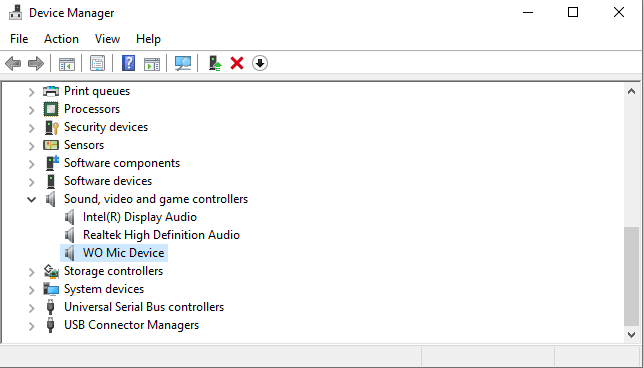The following platforms are 'officially' supported, but it is possible to install MicMac on most x86/x64 platforms (Windows Xp-Vista-7-8-10, Mac OSX, Fedora, RHEL, Ubuntu.). Sommaire 1 Ubuntu. El MIC MAC es un software que analiza los factores que se van a utilizar en un estudio, para determinar si su anlisis es importante o no en la toma de decisiones. Es decir, a diferencia del EXPERT CHOICE, lo que obtenemos aqu no es una toma de decisin sobre el problema principal, sino un anlisis de los factores que estamos tomando en cuenta. Descarga fiable para Windows (PC) de Micmac GRATIS. Descarga libre de virus y 100% limpia. Consigue Micmac descargas alternativas.
Structural Analysis
Structural analysis is a tool designed to structure collective reflection, a legacy of the systems analysis work of the RAND Corporation as detailed in Erik Jantsch’s famous book.
Aim
Structural analysis is a tool that structures the pooling of ideas. This form of analysis describes a system using a matrix which combines the constituent components of the system.
This method identifies the main variables which are both influential and dependent : those which are essential to the evolution of the system.
Description of the method
Structural analysis is carrried out by a working commitee made up of actors and experts from the field under study, but this does not exclude calling on external advisers.
The different phases of the method are as follows : listing the variables, describing the relationship between variables and identifying the key variables.
• Phase 1 : listing the variables
The first stage consists in listing all the variables which characterise the system under study and the environment (internal as well as external variables). This phase should be as thorough as possible and initially should not exclude any line of research.
Apart from prospective workshops (the list of variables should be enriched by gaining information from non-directed interviews with representatives of actors in the system.
The final result is a list of internal and external variables for the system studied.
Experience shows that this list does not generally exceed 70 or 80 variables if the system under study has been thoroughly broken down and outlined.
A detailed explanation of variables is indispensable to follow up the analysis and recognise relationships between the variables and generates a “database to be made which is required for any prospective thinking. It is therefore Cahiers du LIPSOR - Scenarios and strategies : a toolbox for scenario planning recommended that one give a precise definition for each variable, relate former changes, identify variables which started the evolutions, characterize the present situation and recognize trends or future ruptures.
• Phase 2 : Description of the relationships between variables
In a systemic approach, a variable exists only through its relationship with other variables. Structural analysis thus attempts to discover the relationships between variables in a dual-entry table called “structural analysis matrix”.
A group of about ten people who have previously taken part in listing and defining the variables, fills in the structural analysis table over a period of two to three days.
The filling-in must be qualitative. For each pair of variables, the following questions are asked : is there a relationship of direct influence between variable i and variable j? If there is not, one puts 0. If there is, one must ask if this relationship of direct influence is low (1), medium (2) high (3) or potential (4).
This filling-in phase helps to pose n x n-1 questions for n variables (approx. 5000 for 70 variables), some of which would have been evaded if such a systematic and thorough investigation had not been made. This questioning procedure not only enables one to avoid errors, but also helps to organise and classify ideas by creating a common language within the group. It also allows for a redefinition of the variables and therefore tends to make analysis of the system more accurate. Attention must be drawn to the fact that for all intents and purposes, a normal filling-in rate of the matrix is around 20%.
• Phase 3 : Identification of the key variables with MICMAC
This phase consists in identifying the key variables, that is to say, those essential to the system's development, first by using direct classification (easy to set up), then through indirect classification (e.g. MICMAC for Impact Matrix Cross- Reference Multiplcation Applied to a Classification). This indirect classifcation is obtained after increasing the power of the matrix.
Comparing the hierarchy of variables in the various classifications (direct, indirect and potential) is a rich source of information. It enables one not only to confirm the importance of certain variables but also to uncover certain variables which, because of their indirect actions, play an important role (yet were not identifiable through direct classification).
Usefulness and limitations
The primary advantage of structural analysis is that it stimulates thought and generates ideas among group members, thus encouraging them to think about counter-intuitive aspects of how a system works. Participants should not be taken literally but should be made to think. Obviously, there is no single official reading of the MICMAC results and it would be preferable that the group form its own interpretation.
The limitations concern the subjective nature of the list of variables drawn up during the first phase, similar to that of the relationship between the variables (hence the significance of interviews with actors in the system). This subjectivity comes from the well-known fact that structural analysis is not a reality but a means of looking at reality. This tool enables a group to find a method to pool ideas by reducing the inevitable biases. In fact, the results as well as the input data (list of variables and matrix) inform as much about the manner in which reality is perceived by the working group and therefore about the group itself, as about the system under observation. Lastly, structural analysis is a long process which sometimes becomes an end in itself and must not be undertaken unless the subject lends itself to it.
Practical conclusions
Several months are required to carry out structural analysis. Naturally everything depends on the working commitee’s work load and the time devoted to the task. Several pitfalls are to be avoided :
- Sub-contracting the structural analysis entirely to someone in charge of research, or worse still, to external consultants. Investment into any prospective thinking must take place in the minds of those who will have to make tomorrow's decisions ;
- Dispensing with the indispensable initial work on the variables. In this respect, filling in the matrix would thus become totally unreliable and worthless as the matrix will contain neither reliable information nor a common language ;
- Dividing up the completion of the matrix which ends up, once again, containing results which make no sense since the structural analysis is a tool for the collective structuring of ideas.
Eighty percent of the results obtained are self-evident and confirm the participants’ initial intuition. They therefore provide confirmation of common. Above all, they lend weight to the remaining 20% of counter the intuitive results.

To know more about the method MICMAC :
MicMac is an open source project that aims at being cross platform. Very few dependencies are mandatory to have the core program work.
The following platforms are 'officially' supported, but it is possible to install MicMac on most x86/x64 platforms (Windows Xp-Vista-7-8-10, Mac OSX, Fedora, RHEL, Ubuntu...).
- 5Useful softwares for MicMac
- 5.1GUI
Ubuntu
Learn how to Install MicMac on Ubuntu.
Here is some basic steps on how to use commands Ubuntu.
Windows
Learn how to install MicMac on Windows
Mac
Learn how to install MicMac on MAC
Raspberry Pi
Learn how to install MicMac on Raspberry Pi
Useful softwares for MicMac
GUI
AperoDeDenis
You can use AperoDeDenis which try to be a global and easy to use alternative GUI to use MicMac.
It is developed by Denis Jouin from the Cerema (Centre d'études et d'expertise sur les risques, l'environnement, la mobilité et l'aménagement, french public institute).
The main repository to download documentation and software is hosted on GitHub.
Micmac and Meshlab/CloudCompare (see below) have to be set up before to use AperoDeDenis.
Visualization
Here are some really useful tools to visualize the different 3D products :

- MeshLab : http://www.meshlab.net/ (all platform are supported). This software is generally used for points clouds visualization, surface reconstruction and texturing.
- CloudCompare : http://www.cloudcompare.org/ (all platforms). Similar to Meshlab, possibly more up to date and richer in tools.